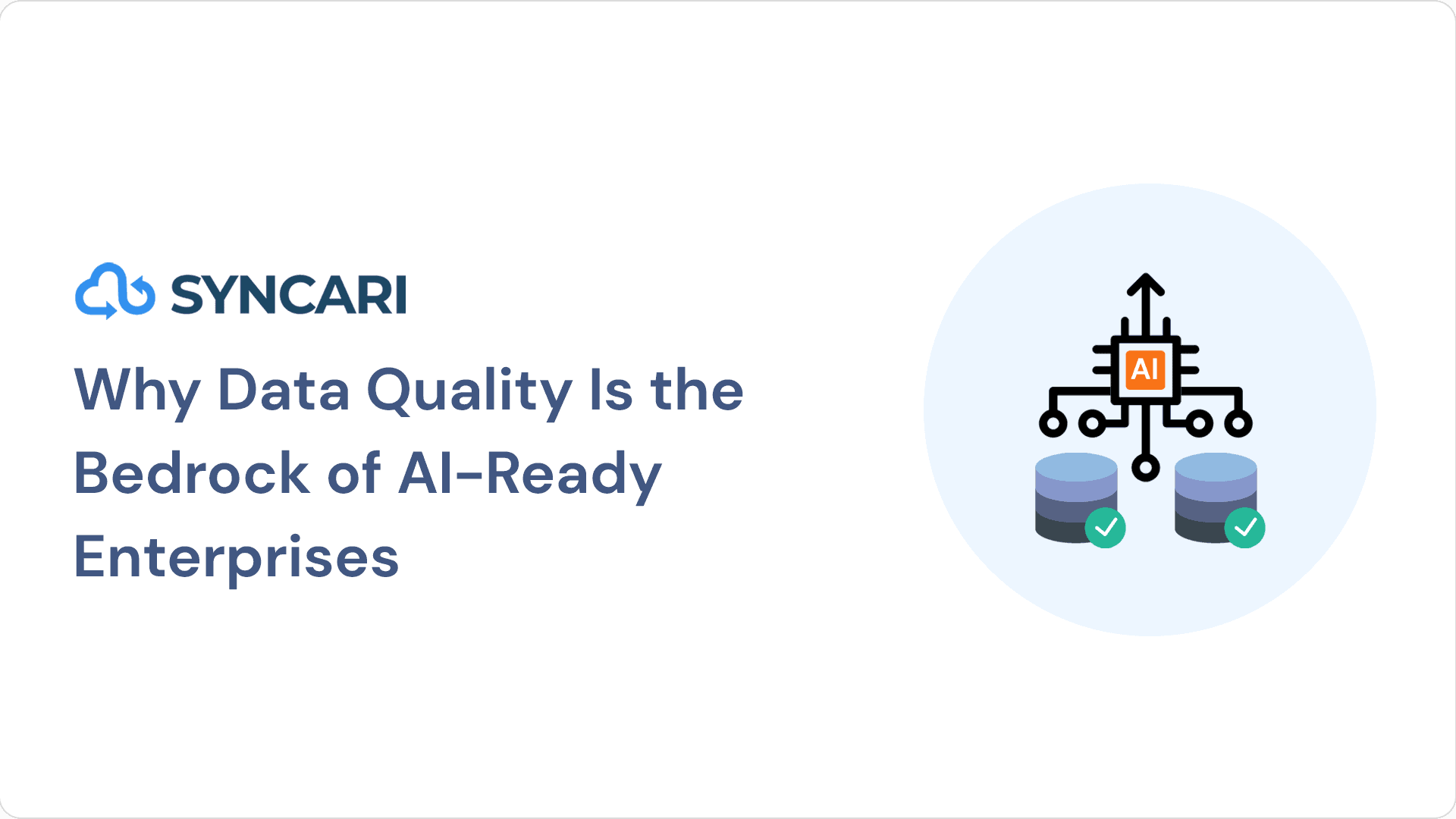TL;DR
Schema drift silently breaks your enterprise data architecture, costing up to $2.1M annually in broken processes, failed initiatives, and compliance risk. Learn how Syncari’s dynamic MDM fixes the root problem by syncing evolving schemas across 200+ systems.
What Is Schema Drift (and Why It’s So Dangerous)?
Your systems are evolving, but not in sync.
Every time someone updates a field name in Salesforce, changes a data type in NetSuite, or modifies a classification in Workday, you risk schema drift: when one system changes and others don’t follow.
The result? Silent, cascading failures across your integrations, analytics, automations, and compliance controls.
Definition: Schema drift occurs when changes to a data model in one system (e.g., renaming a field, modifying a data type) aren’t synchronized across other connected systems.
Real-World Impact: How Schema Drift Breaks the Business
| Function | Risk | Example |
| Revenue Operations | Broken revenue recognition | Salesforce opportunity stage change not synced to NetSuite |
| Compliance | Audit gaps | Risk classification changed in core banking, not reflected in compliance system |
| Supply Chain | Production delays | Engineering updates part schema, but procurement still references old specs |
| AI/Analytics | Model failure | Customer health score schema changes break churn model training |
Average cost per schema drift incident: $35,000
Undetected schema drift requires complete system remapping, costing millions.
The Hidden Financial Toll: $2.1M Annually
Here’s a breakdown of the enterprise damage caused by unmanaged schema drift:
- $890K – Revenue recognition issues
- $480K – Compliance inconsistencies
- $470K – Supply chain failures
- $350K – AI/analytics project failures
These costs don’t include productivity losses, team burnout, or reputational damage.
Why Traditional Tools Can’t Handle Schema Drift
| Legacy Tool | Limitation |
| ETL / iPaaS | Built for static schemas — breaks silently on schema change |
| Legacy MDM | Rigid data models, can’t adapt dynamically to new attributes |
| Manual Governance | Too slow, error-prone, and reactive to keep up |
Traditional data stacks weren’t designed for today’s pace of schema change.
What’s Needed: Dynamic Master Data Management
Dynamic schema synchronization solves schema drift at the root.
How It Works:
- Real-Time Schema Detection
Automatically detects field name, type, and relationship changes across connected systems
- Dynamic Schema Adaptation
Updates mappings automatically to reflect schema evolution, without downtime
- Cross-System Schema Sync
Maintains consistent models across 200+ systems with patent-protected sync tech
- Audit Trail & Change Governance
Tracks who changed what, where, and when, enabling compliance and rollback
Results: What Leading Enterprises Are Seeing
| Organizations with Dynamic Schema Management | Benefit |
| 99.2% data consistency | Improved executive decision-making |
| 45% higher digital initiative success | Reliable automation and reporting |
| 67% less time spent reconciling data | Operational efficiency |
| 3x faster change implementation | Business agility |
Syncari’s Solution: Built for Schema Drift Prevention
Syncari’s Schema Sync is a dynamic MDM platform purpose-built for enterprise schema evolution.
Key Capabilities:
- Real-time detection and automated mapping updates
- Multi-directional sync across 200+ systems
- Version control, rollback, and schema visualization
- 95% reduction in schema-related incidents
- Zero-downtime schema adaptation
Patent: US 11,580,073, multi-directional schema synchronization at enterprise scale
Why You Don’t Need a Separate Data Governance Tool
Traditional MDM vendors treat governance as internal schema control.
But true enterprise data governance means enforcing schema consistency across systems, in real time.
With Syncari:
- You eliminate the need for additional governance platforms
- You enforce rules at the system level, not just in metadata
- You unify MDM, data quality, governance, and sync in one control plane
One platform. Fewer tools. Continuous trust in your data.
Next Steps: Strategic Execution Plan
For Executives:
- Audit schema drift impact on strategic initiatives
- Evaluate business case for dynamic MDM
- Align stakeholders on data modernization roadmap
For Operations Leaders:
- Identify recurring schema drift incidents
- Quantify time spent on manual reconciliation
- Map critical flows vulnerable to schema mismatches
Let’s Fix Schema Drift for Good
Book a Live Demo: See real-time schema drift resolution with Syncari


